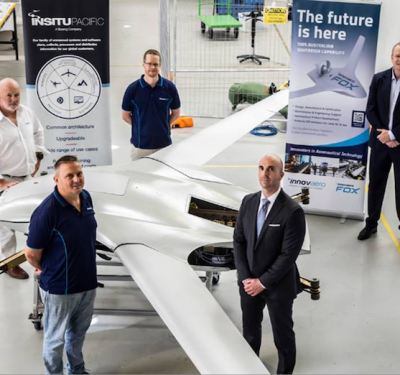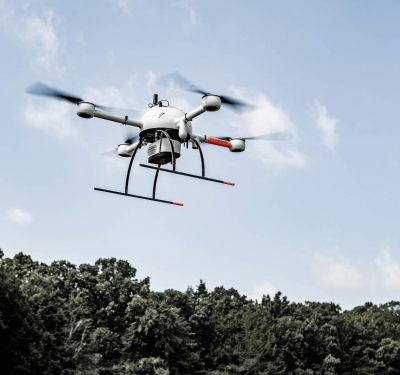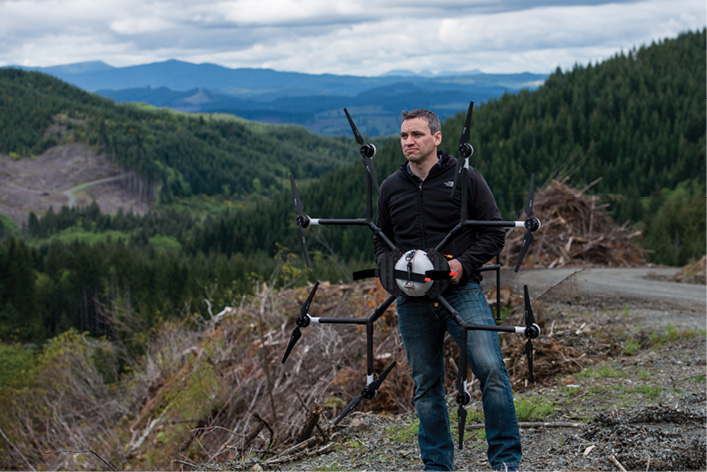
Planting trees is not easy work. Unlike spreading seeds in a freshly tilled acre of level farmland, forestland is hilly, sometimes inaccessible, and covered in things—rocks, shrubs, vines and other trees. That’s why it’s still, for the most part, done by hand.
At least two companies are pursuing what they say is a better way: seeds distributed by UAS. A small, unmanned vehicle can go where human crews cannot and plant trees faster and better than humans.
Portland, Ore.-based DroneSeed said it offers a full, “seed-to-tree” solution to timber companies, state forest services, and nonprofit organizations. It has a set of unmanned aircraft systems (UAS)—three-arm multi-rotor drones with proprietary elements—that map and analyze land to find the best places to plant trees. A UAS can fire “seed capsules” into the ground then come back and track the trees’ growth. It even can spray herbicides to protect the seedlings from invasive species.
Meanwhile, Oxford, UK-based BioCarbon Engineering, which recently announced a seed funding round from drone manufacturer Parrot SA, is working on a similar platform. Details are scant and the company is operating in quiet mode for now, but a company representative did confirm that BioCarbon Engineering is in field trials and hopes to have more to share soon.
Selective Seeding
“When planting trees,” said Lauren Kozak, DroneSeed’s manager of public relations, “they send out people with shovels to do a thousand trees a day. It’s dangerous and expensive work.”
The other option is to drop thousands of seeds from a helicopter, basically shoveling them out the window, said Jim Warren, public and private forestry section chief at the Wisconsin Department of Natural Resources. This scattershot approach can work for some species of tree, like jack pine, especially if the seeds are cheap and can be blanketed across a piece of land.
DroneSeed takes the opposite approach.
The first step in the process uses a mapping and surveying UAS to locate the exact “micro site” in which a seedling will thrive.
“We’re not just randomly dropping seeds,” Kozak said.
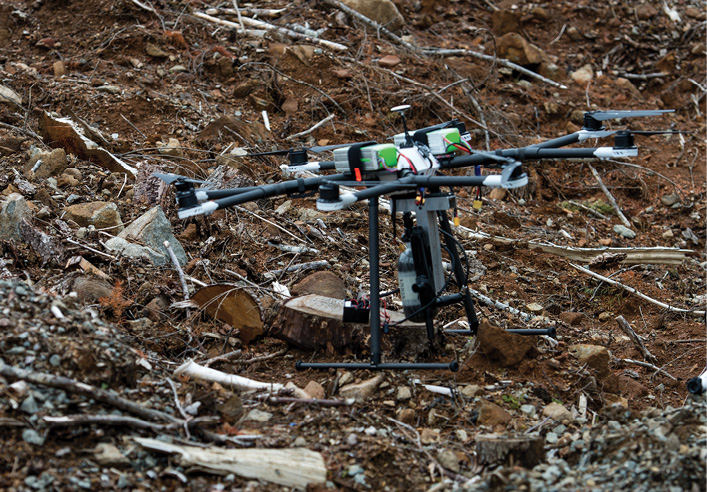
DroneSeed eliminates areas too close to roads, waterways, other trees and buildings. “From there, we can take characteristics of the environment to find sites that are ideal for planting. If we just eliminated (from consideration a spot with) a large rock…we may determine that shadows from that rock may create ideal conditions for a young tree to grow up, and choose to plant a seed there.”
After the mapping drone does its job, the service drone takes over. Armed with a payload of proprietary seed pellets—each a mixture of fertilizer, natural pest deterrents, and the seed—and a compressed air gun, the drone fires a pellet into the ground at 350 feet per second. That’s a little faster than a paintball gun and slower than a rubber bullet.
Because the machine can plant seeds so precisely, obstacles like rocks and downed trees aren’t an issue.
“That’s the exact reason why Droneseed is so important,” Kozak said. “People have to get through the terrain; most of the time it is land that is covered in all kinds of stuff. That’s a huge reason to send in drones.”
The service drone has multiple attachments, “like a tractor,” the company said; once seeding is done users can attach a spray module and the vehicle flies back to the area to treat the seedlings with natural pest deterrents.
DroneSeed currently has four paid pilot projects, helping replant land in the U.S. and Canada after forest fires, and working with a water utility to plant shade trees to naturally cool water before it enters their treatment plant. The reforestation project has saved Clean Water Services from having to build a $65 million cooling plant, Kozak said.
Fighting Fire, Insects
Pilot projects notwithstanding, DroneSeed may have a lot of work to do before making inroads with established forestry agencies. Wisconsin’s DNR has “not had any discussions, nor used any of that” technology, according to Warren, who added that manual methods of reseeding have worked fine in the past. “I’m sure it’s something that at some point we’ll explore and see if there’s some applicability, but at least on state lands we just cover it with planting crews.”
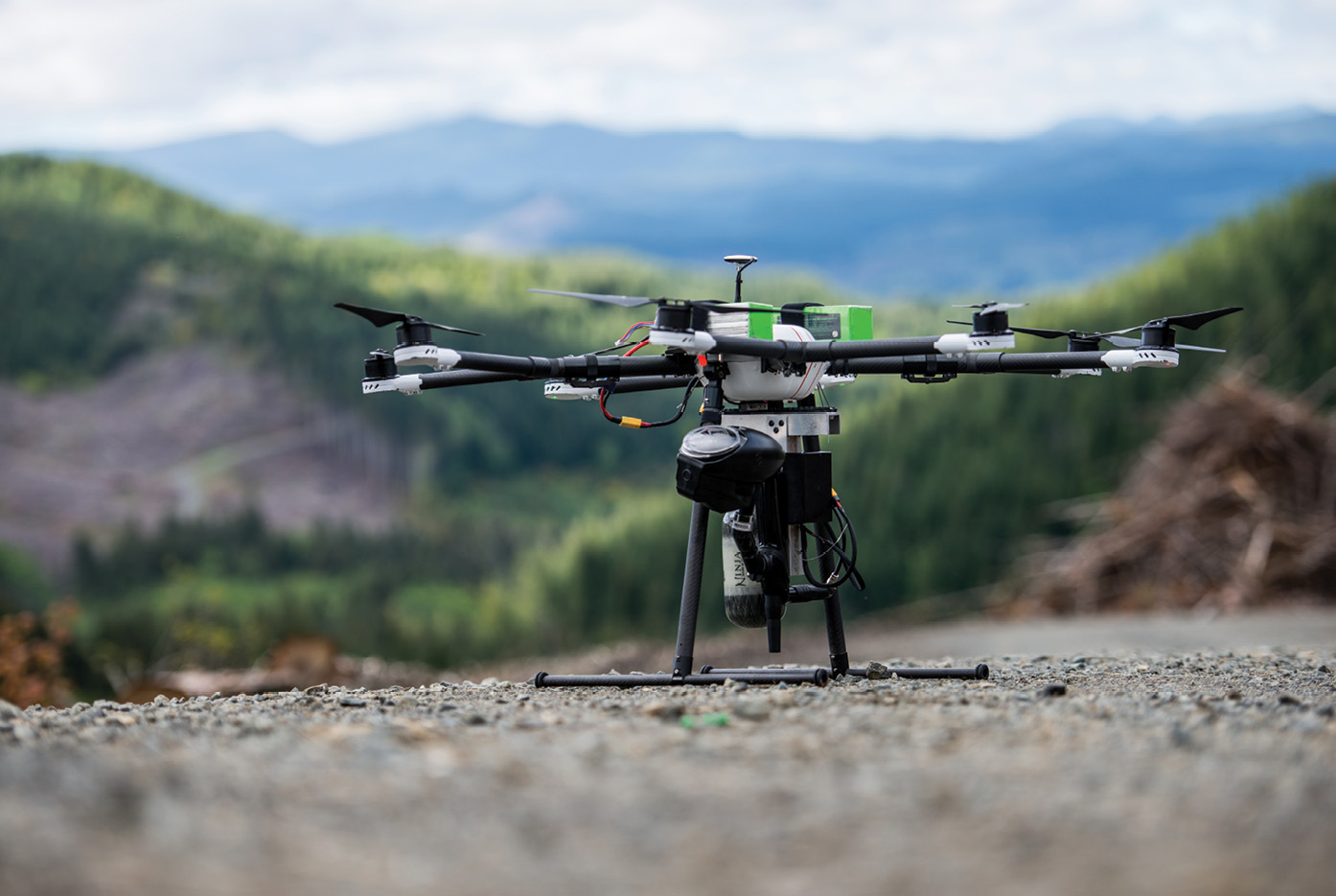
Fred Turck, Virginia DNR manager of resource protection, said a UAS might be useful in the future as a scout vehicle to see what areas might need an application of herbicide or to monitor logging jobs. In the future, if line-of-sight requirements are lifted, Virginia might also use a drone to monitor a wildfire.
And in Michigan, forest service officials have discussed using drones to monitor the spread of invasive pests like the Hemlock Woolly Adelgid, which kills trees from the top down.
“Most of the time you’re either way high in an airplane, or you’re on the ground looking up,” Michigan DNR manager of forest planning operations David Price said. An unmanned vehicle would let inspectors get closer to the treetops, where eyes are needed most.
But DroneSeed is optimistic that people will realize the potential of tree planting by drone. And at least some industry observers agree: the startup was accepted to the prestigious incubator TechStars Seattle in 2016



